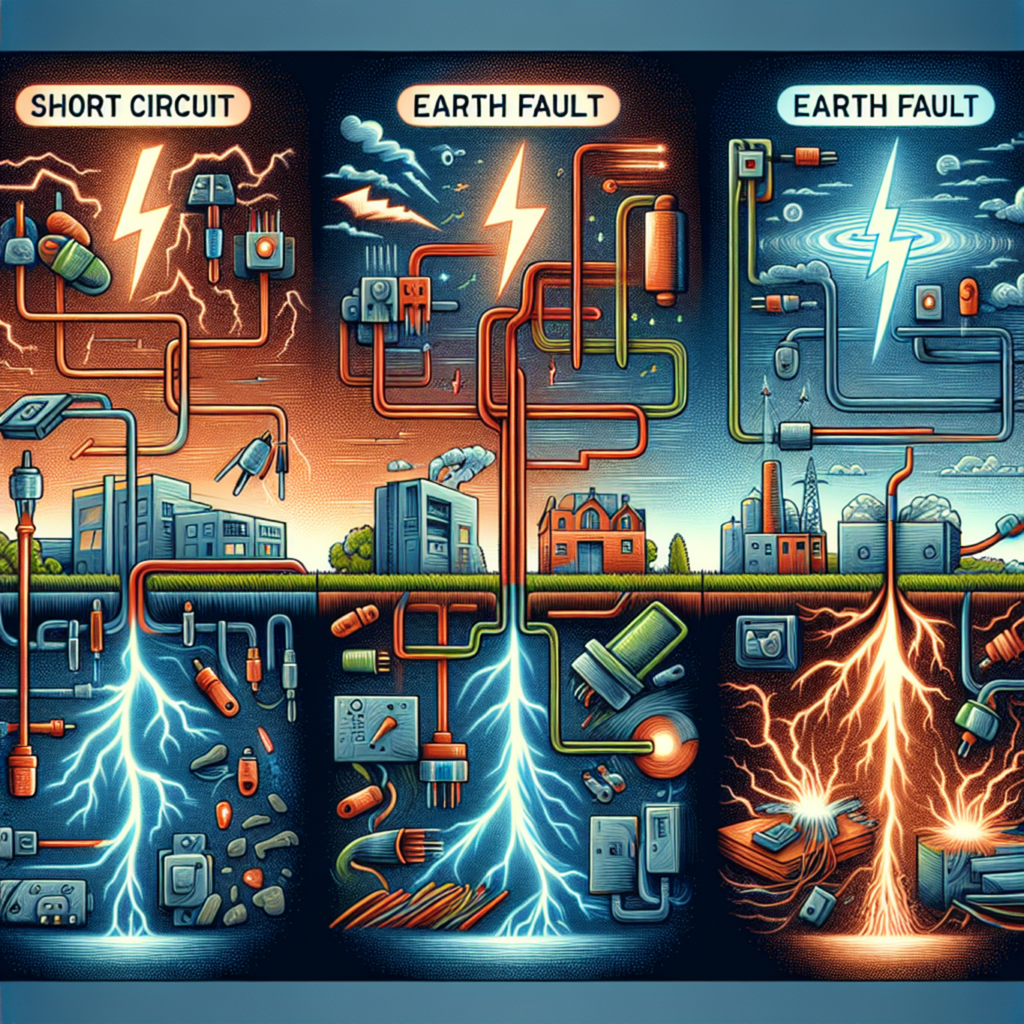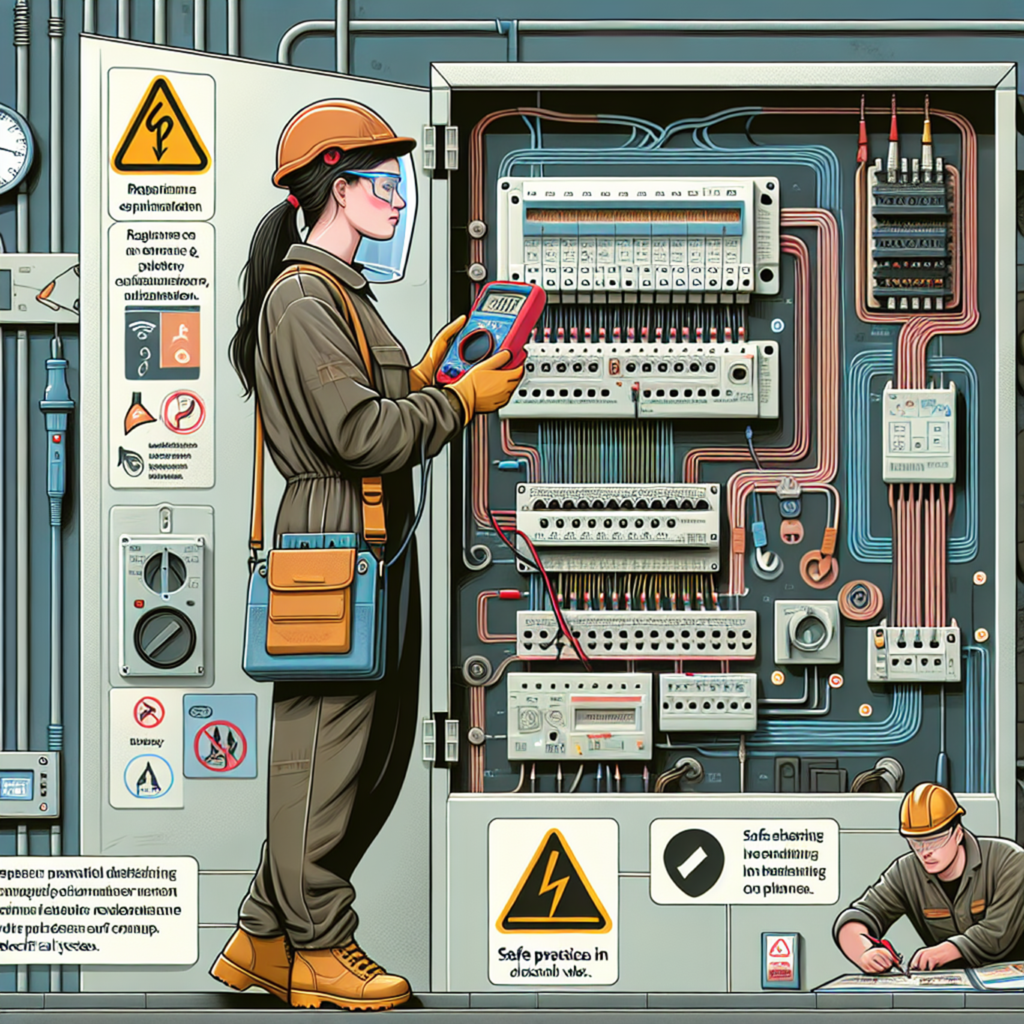
Mastering the Art of Electrical Fault Finding
When it comes to electrical systems, installing the best appliances in your property is important, but one of the crucial skills you should have is the ability to check and fix electrical faults that may cause threats to your home or business. Naturally, electrical fault finding isn’t simply about replacing a blown fuse or resetting a triggered circuit breaker; it’s also about ensuring the optimal safety and performance of your entire electrical system. Regular electrical inspections by a qualified electrician can help detect potential issues early.
This complete guide to finding electrical faults in your home will make an electrician, homeowner, or DIY enthusiast able to tackle these electrical issues with confidence.
Finally, you’ll get a complete list of the common types of electrical faults that can occur in your residence, along with a guide to locate a fault and how to remedy it to ensure your electrics are always up to standard.
Understanding Electrical Faults in the Electrical System
Certainly, a total breakdown of electricity to flow is utterly inconvenient, but what’s more unsafe are faults in your wiring. These defects can result in fires, electric shocks, and damage to property and appliances. Early fault detection is necessary to avoid serious electrical issues from developing.
Some of the common electrical faults include short circuits, earth faults, and loose connections. There are various kinds of electrical faults, and therefore different methods of diagnosing each.
Identifying the signs of electrical malfunctions is a good first step to preserving electrical safety. Flickering lights, constantly tripped circuit breakers, and a buzzing sound from electrical outlets are all signs that there may be something wrong with your system, and it may be time to get your wiring inspected by a professional.
Common Types of Electrical Faults
Short Circuit
A short circuit is when electricity flows outside of its intended path, often due to faulty wiring or damaged insulation. This can cause a dangerous spike in current to flow, producing excess heat and potentially causing fires.
Maintaining proper insulation and regular electrical inspections can prevent these issues. If you suspect a faulty circuit, it’s important to identify the problem early, turn off the main safety switch, and contact a qualified electrician to handle the issue.
Earth Fault
An earth fault happens when the current is interrupted and diverted to the ground from its designed path. This can lead to ground-fault circuit issues, equipment damage, and risk of electric shock.
Installing and maintaining Ground Fault Circuit Interrupters (GFCIs) is essential to prevent this. Routine checks and using electrical appliances that meet safety standards can reduce these risks.
Loose Connections and Faulty Wiring
Many electrical faults stem from loose connections or faulty wiring. These may loosen over time due to vibrations or electrical demand exceeding system capacity. Arcing and overheating can occur at the main electrical panel, potentially leading to serious electrical hazards.
Regularly checking electrical connections and making sure they are properly secured will help ensure your system remains safe and functional. If necessary, electrical installations may need to be replaced to prevent further issues.

Steps to Effective Electrical Fault Finding
Initial Assessment
When the electrical service is down, it is advisable to conduct an initial assessment of the power condition. For security reasons, switch off the main safety switch and individual circuit breakers. Go over the switchboard and look for apparent damages like burnt smells, scorch marks, or melted cables.
Such a preliminary evaluation could help to point out the source of the problem, helping you identify the problem and focus troubleshooting efforts downstream. This can prevent faults in your wiring from escalating further.
Systematic Fault Isolation
If the electrical service is down, you should immediately make an initial assessment of the power status. Turn off the main safety switch and circuit breakers, for security reasons.
Check the switchboard for obvious faults, such as a burning smell, burn marks, or melted wires. This type of early analysis provides a rough idea of the cause of the problem and allows you to focus on fault detection further downstream.
Engaging a Professional Electrician
While you may be able to fix some electrical faults yourself, others are too dangerous and unstable for those without proper training. If you cannot figure out the source of the problem or it goes beyond your expertise, it’s important to know it’s time to call a qualified electrician.
When you hire a licensed electrician to handle repairs, you minimize the risk of accidents and ensure that the issue will be properly resolved. Getting your wiring inspected by a professional is critical to avoid more serious electrical issues later.

Tools and Techniques for Troubleshooting Electrical Faults
Essential Fault Finding Tools
We need the right tools to find and fix faults effectively. Some of the essential tools that you need to check electrical faults are as follows:
Multimeters Voltage testers Insulated screwdrivers With one of these tools you will be able to diagnose electrical circuits, find faulty parts, and get a general health check on the electrical system. Remember to always follow the rules for working with them, and that doing so will not cause electric shock.
Advanced Diagnostic Techniques
One very complicated technique to understand flow paths in the network is still being worked on, as an advanced diagnostic procedure. This is based on circuit diagrams and schematics. Circuit diagrams give a graphical image of the electrical parts along with their connections helping us to determine open and closed circuits. A thorough knowledge of the way load is spread and electricity itself flows, in addition to advanced electronic diagnostic skills are crucial to accurately diagnose complex electrical faults.

Preventative Measures for Electrical Safety
Regular Maintenance and Inspections
Having regular electrical check-ups done is a good preventive measure against the occurrence of electrical faults. Furthermore, performing routine checks can help identify potential problems such as loose connections or defective electrical components from getting worse.
Finally, an electrician can conduct a comprehensive inspection of your systems and suggest timely repairs or replacements that will ensure the safety of your electricity.
Upgrading Electrical Systems
Have your electricity updated and running more smoothly, and safely By adding next level safety precautions like Residual Current Devices (RCDs) and Safety Switches, you can take a step to guard your family from these sorts of electrical glitches.
This will allow them to detect irregularities in the flow of current and shut off the circuit they are protecting, a feature that prevents dangerous electrical shock or fires.
Safe Practices in Electrical Work
Here are a few safe practices that you need to follow while working electrically:
Never handle electrical components unless you are equipped with the proper personal protective equipment (PPE), such as gloves and goggles.
Adhere to the safety handling guidelines applicable to electrical equipment and make sure that the electric panel is easy to reach in case anything goes wrong.

Conclusion
Electrical fault finding is a skill you will need to keep your electrical system safe and performing effectively. By knowing the common electrical faults that can come up, having good fault-finding techniques as well as making sure your system is running with preventive measures in place you can ensure your electrical system will be fault free.
Being a homeowner, DIY hobbyist, or electrician, regular inspections and advice from professionals in the electrical industry are the key factors to ensure electrical safety. Take steps to keep your home or business safe from electrical hazards by being proactive about electrical problems.
FAQs
1. How do I identify a problem with my electrical wiring?
Getting a licensed electrician to take care of electrical faults would be a healthier way compared to doing it yourself( Implead, 2014). Safety: The best way to handle any electrical wiring problem, fuse, or circuit breaker is to have a licensed electrician like Top Rated Electrician safely and properly fix it.
2. What should I do if a fuse blows frequently?
A circuit breaker can trip and stop the flow of power if a: You have a short circuit is likely to be the cause but there are other signs, overload, faulty equipment. Unplug all devices on that circuit and flip the breaker back on. Otherwise, the circuit or even the breaker may need to be inspected, requiring a licensed technician.
3. Why does my circuit breaker keep tripping?
Regularly tripping fuses can be a sign of an overburdened circuit-trip left. Unplugging certain devices is recommended so that you be sure on which one the fuse continues to blow. If it is, there may be a more significant problem within the circuit that needs reviews and repairs by an experienced electrician.
4. Is it safe to fix electrical faults by myself?
Getting a licensed electrician to take care of electrical faults would be a healthier way compared to doing it yourself( Implead, 2014). Safety: The best way to handle any electrical wiring problem, fuse, or circuit breaker is to have a licensed electrician like Top Rated Electrician safely and properly fix it.

Hi, I’m Yousaf, a content writer with a passion for gadgets. I love exploring the latest in technology and turning complex details into easy-to-understand content. My goal is to help readers stay updated and make informed choices in the fast-evolving world of gadgets.